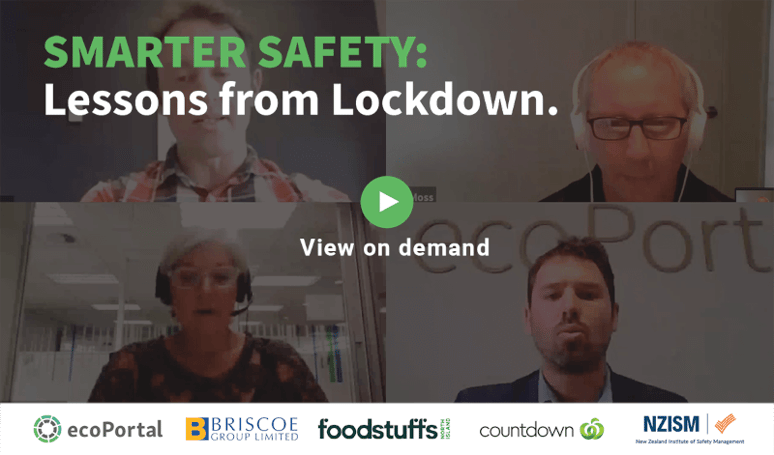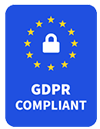18th June 2020
Since COVID-19 was officially declared a pandemic, news agencies and leadership experts around the world have meticulously dissected the way those in charge have responded. The dramatic change has forced business leaders to make an abrupt U-turn, shifting their focus from revenue, sustainability, and innovation, to safety and survival.
Businesses have encountered many unforeseen roadblocks – workforce shortages and disrupted supply chains – all while navigating working from home, health and safety concerns, and supporting staff and families through an extended period of uncertainty.
A recently-published article from Harvard Business Review explores what type of leaders organisations need right now. The authors conclude that ‘real leaders’ are those who inspire, forging a path through any fear that so quickly clouds rational judgement.
This is not an easy task. The ability to help others triumph over adversity is a muscle that leaders rarely need to flex; a skill that is hard to obtain without having lived through the experience.
Those industries that continued trading through lockdown were the first to face the new normal head-on, presenting an opportunity for businesses only just coming out of lockdown to learn from their wins and mistakes.
ecoPortal recently spoke with health and safety representatives from Foodstuffs, Woolworths NZ and Briscoes about the key behaviours of leaders in their business that helped their teams get through this challenging time.
1. Be clear, be consistent
While hygiene practices were of the utmost importance, this was simply a matter of “ramping up” existing protocols, explains Ben Sheidow, Head of Health, Safety and Wellbeing at Woolworths NZ.
The critical element was ensuring that message got through clearly, so staff knew how to enforce the new standards. They began with quite ‘basic’ but effective communication, for example tape on the floor to mark out distances, rather than waiting for the more designed decals and posters.
The next piece in the puzzle was hearing back from the team.
“We took feedback from our team and customers to ensure they were comfortable with the processes in place,” Ben said.
Head of Safety and Wellbeing at Foodstuffs Michelle Cooper says their COVID-19 response plan involved sticking strongly to a hierarchy of controls.
“Those who could work from home did work from home, but it also meant that we needed to manage only people that were well coming into the workplace.
“We got really clear - very quickly - about staff not coming to work if they were unwell – and making it OK for that to be a reality.”
2. Show people their part in the bigger picture
Managing people and organisational processes in a crisis shouldn’t be too dissimilar to managing them under normal circumstances – staff always want and need to understand their value and position in the wider company. However, the urgency and focus that is distinctive of a crisis can potentially highlight any pre-existing inadequacies , as this article by Executive Development explores.
Briscoe Group was given the all-clear to ship winter essentials under level four and leaders faced the unenviable task of managing teams that were split between home offices and the depot floor.
Briscoe Group’s GM of Human Resources, Aston Moss, believes embedding safety, wellness and health into company culture has been a big contributing factor to how effectively Briscoe Group was able to respond.
“There are some economic challenges ahead and the best way we can navigate those is to make sure our people know where they stand – and that their best interests align with our own,” he says.
This – tied to a solid health and safety framework – helps employees to see how their work contributes to the bigger picture.
3. Use a decision-making framework
As part of a series on crisis leadership, McKinsey & Co explore the ways in which many companies will be far too slow in making the big decisions.
The speed and scale with which the pandemic arrived meant the sheer number of decisions that needed to be made could have been overwhelming. Often the most immediate reaction is to wait for more information, but in an environment as uncertain, evolving, and drastic as COVID-19, waiting wasn’t an option.
Michelle explains how a decision-making framework enabled the leaders in her business to make fast, well-informed decisions, even as new or conflicting information appeared.
The framework was made up of four key components. Every time a decision needed to be made, they would consider the safety and well-being of:
1) Their staff
2) Their customers
3) The general New Zealand public
4) The business.
Michelle says implementing such a framework early allowed the business to make decisions with speed, precision, and confidence.
“Businesses opening at levels three and two are fortunate that there are now more resources available. But you’ve still got to take those resources and figure out how they’re relevant and what’s right for your business,” she advises.
And if a mistake is made, learn – then move on.
“We’ve spoken quite actively about the humility that has been required to deal with the situation. Mistakes will be made – pick yourselves up and try again.”
Definition + Collaboration = Direction
When it was announced that New Zealand would be moving into alert level four lockdown, supermarkets had 48 hours to get ready. They opened with the bare bones of safe operation and then continuously evolved with the changing requirements and protocols.
With new and often conflicting guidelines issued daily, health and safety leaders found the only way through was to carve a clear path of their own.
“We were all thrown in the deep end,” explains Michelle. “We were looking to government departments for direction, but they were busy with the healthcare sector, so that's why we aligned strongly with Countdown to understand what we should be doing – making sure our policies were consistent, and we were all doing the same thing.”
Michelle and her industry counterpart, Ben, agree that fostering a culture of collaboration, rather than competition was key. Together the supermarket chains could get clear on definitions – who was considered a vulnerable worker, the basics of health and safety protocols, policing in-store numbers, and spacing of queue lines. This meant workers and customers could take reassurance knowing both retail powerhouses were united, operating safely and consistently, setting aside their usual competitiveness.
“Normally we’re mindful about competitive restraints, but we’ve put them to one side to make sure we're all confident we’re doing the right things to keep our teams and customers safe,” Aston adds.
5. Be flexible. Re-purpose where needed
If a business is to maintain productivity during periods of chaos and uncertainty, leaders require the ability to change and adapt quickly.
Whether it be embracing new technologies, changing systems or redeploying manpower to different parts of the business, leaders must be prepared to operate openly - and sometimes abnormally.
“People with a command-and-control kind of leadership will struggle in this environment because you will need to change systems,” Michelle says.
“One of the things that helped us was having people ‘swim in their lane’ so the subject experts could do what they needed to do.”
COVID-19 has also caused major disruptions to international trade, putting pressure on domestic supply chains and compelling businesses to adapt their operations.
Michelle explains that an organisation needs to be prepared to “turn its supply chain on its head”, repurposing and restructuring standard operating procedures to better navigate unfamiliar territories.
“We figured out that after lockdown started, New Zealanders would have pretty much all the toilet paper they needed, so it was about focusing on food and dry goods,” she says.
It was also about making sure you have access to the necessary equipment and supplies to keep staff and customers safe.
“Like hand sanitiser first and foremost,” says Ben. “We made sure we had a reliable supply chain to keep it in stock."
6. Strong, consistent communication for morale and compliance
Crisis management experts will use words like open, honest, authentic and transparent to describe what effective communication looks like. But at its core, communicating regularly with employees is important simply because it helps them stay informed, feel heard and remain focused. Without regular updates, people will naturally start to draw their own conclusions.
All three of our speakers have seen first-hand the benefits of prioritising consistent communication across an organisation – especially in a situation like COVID-19 where information is changing from one day to the next.
Ben talks about how his organisation hosted open FAQ sessions, and used tools like Workplace by Facebook and video messaging to update teams on pivotal compliance news.
“When you’re communicating, take on the hard questions. They're not easy but address them, even if you don’t have all the answers yet.”
And with heavy workloads and team fatigue, there was an increased focus on supporting store teams with additional resources like online yoga - initiatives that could benefit their overall mental and physical wellbeing.
Michelle and Aston both spoke to the way their organisational leaders communicated up and down the chain.
“Our CEO set an amazing tone – he was clear and it was apparent from the get-go who was in charge. There were really clear expectations which I think helped everybody in the business cope,” says Michelle.
7. Find creative ways to engage remote-working staff
Pre-COVID-19, working remotely was somewhat of a luxury; a privilege seemingly reserved for digital nomads, freelance creatives and a select other few. Coronavirus has forced more people to work from home than ever before – and that presents challenges.
Unlike their counterparts in supermarkets, the Briscoe Group worked from home; where their ability to communicate fluidly was “somewhat diminished”, says Aston.
With a communication and e-learning platform (Axonify) already established, the brand was able to make a quick pivot – even utilising brand ambassadors to share messages of support and healthy living insights.
“We’ve used that platform extensively for communications. We were able to drive engagement to 98% – people were logging on every couple of days.
“From the start we focused on ‘peace of mind’ issues like pay, seeking feedback, what we were doing to ensure our team and customers stayed safe.
“We also employed ecoPortal (health, safety and risk software) as part of our shift monitoring, so we've got one centralised electronic record right across the country. We can check in on each site to see if any issues are emerging and catch them quickly and seamlessly.”
It comes down to safety and humility
New Zealand may be ahead of the rest of the world in eradicating the virus, but one thing’s for sure – this isn’t the end.
“We had a rapid-fire introduction of controls, new ways of working and new behaviours. Now we need to continue to improve and embed these.
“There’s a lot of lessons we can learn from this going into the future. As we go into flu season, this can help reduce the spread of illness – not just COVID-19,” Ben says.
“Fear will linger top of mind for some time to come,” Aston says. Stay close to your teams, provide purpose and meaning so they know what they’re being asked to do. Reach out to your customers, communicate how you will continue to look after their safety for their peace of mind.
“Businesses need to get this right for New Zealand,” Michelle says. “It's not about profitability – it's about something beyond all of us now. If ever there was a time to get the basics of health and safety right, it's now.”
Key takeaways
- - Communicate clearly and consistently with staff and customers.
- - Open channels that let staff give feedback.
- - Don’t avoid the tough questions – tackle them head-on.
- - Seek genuine collaboration with industry – even with competitors.
- - Give team members a clear understanding of their importance to the business and part they’ll need to play.
- - Leverage technology to improve communication and connection.
- - Be flexible – you’ll need to make changes on the fly.
- - Create a framework that will offer a road-map for making fast decisions even when you don’t have all the information.
- - Look for opportunities to improve the way you operate.








